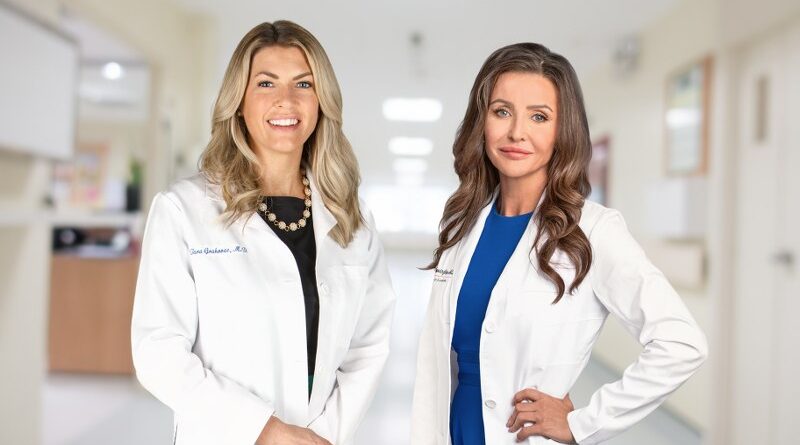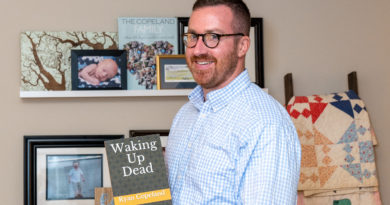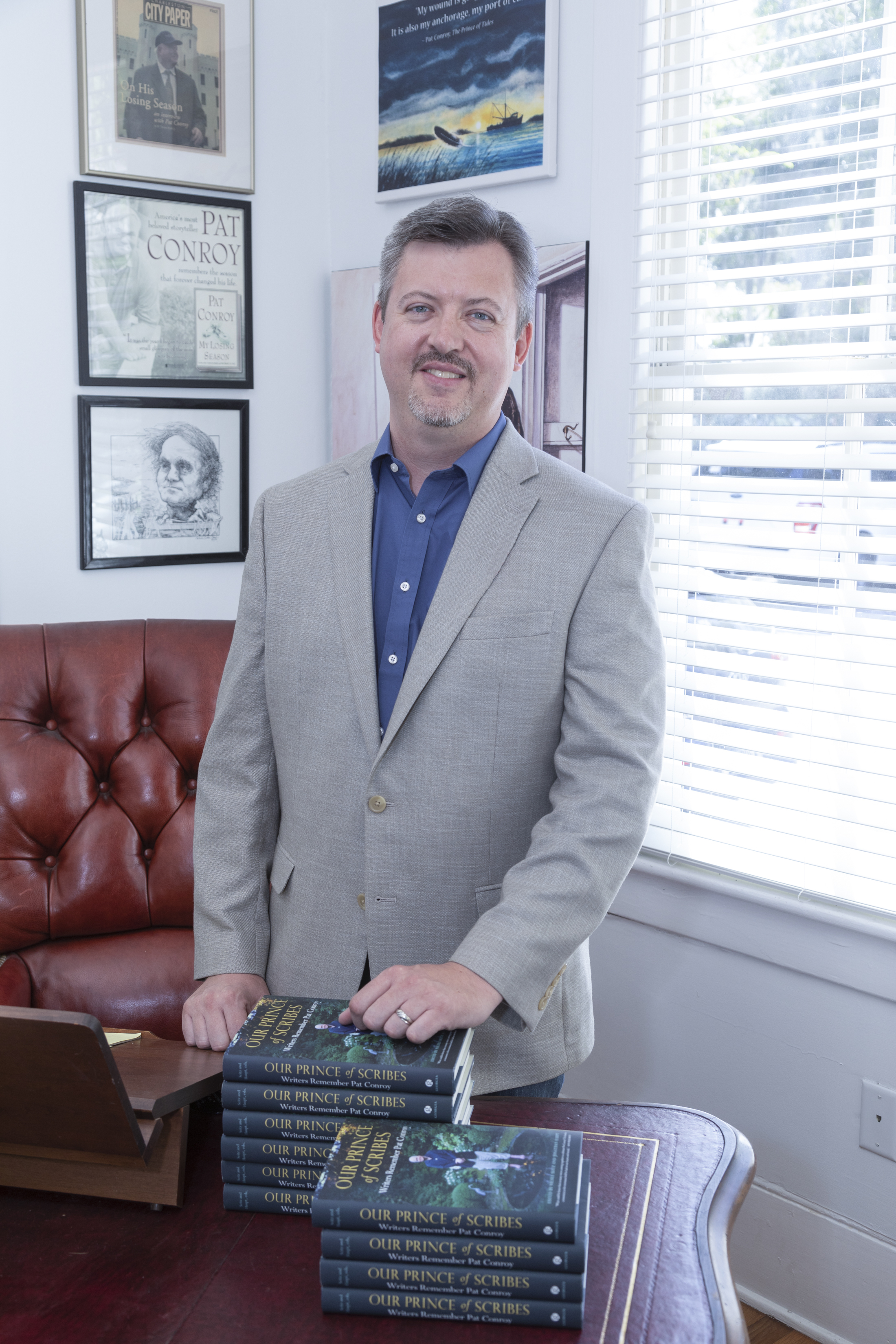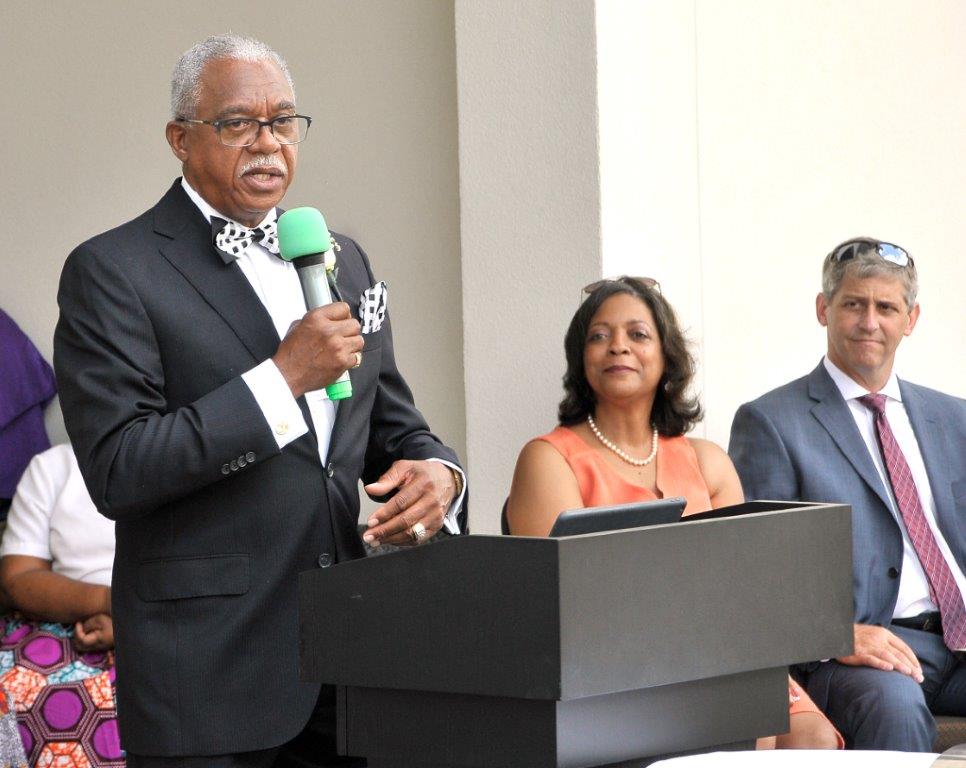Dr. Tara Grahovac and Dr. Heidi Harrington
A WINNING TEAM
Beaufort Memorial Duo Unites to Bring Breast Reconstruction Home to Lowcountry
story by EMMA JUNE GROSSKOPF photos by CHARLOTTE BERKELEY and PAUL NURNBERG
A new dynamic duo is taking the breast reconstruction world by storm at Beaufort Memorial.
The Beaufort Memorial Breast Care & Surgery Program is the realm of Tara Grahovac, MD, FACS, a board certified and fellowship-trained breast oncology surgeon. With the addition of board-certified plastic surgeon Heidi Harrington, MD, to the Beaufort Memorial staff, the organization is now stepping into a new era of breast reconstruction for mastectomy patients – an era of innovation, self-confidence, and convenient care, right here in Beaufort County.
The two surgeons are working in tandem to build a breast reconstruction program at Beaufort Memorial, offering patients specialized breast procedures close to home and using advanced technology that can significantly improve outcomes for women on their survivor journey.
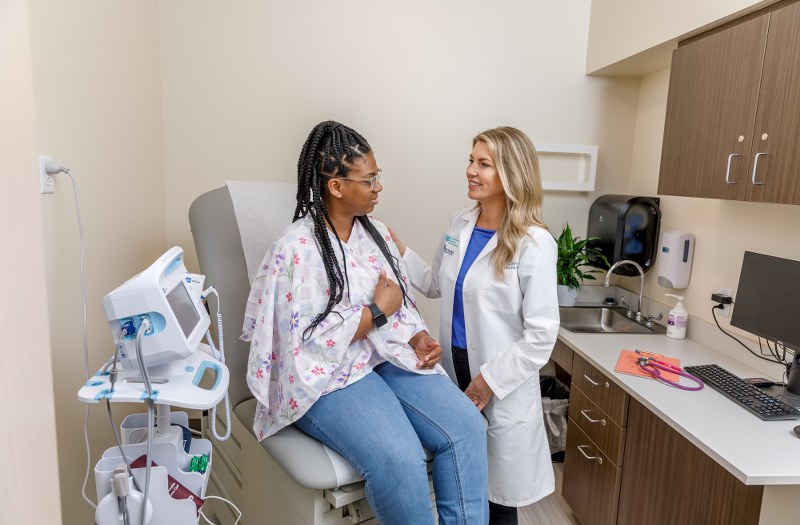
CARE CLOSE TO HOME
A mastectomy is a surgery to remove a breast with the goal of treating or preventing breast cancer. For many women who have undergone mastectomies, reconstructive plastic surgery can play a key role in their return to normalcy and wholeness by restoring their breast shape and appearance.
With Dr. Harrington joining the Beaufort Memorial surgical staff, the mastectomy and the reconstruction can be done in a single “direct-to-implant” surgery.
“I have been very personally involved in this whole process of recruiting a high-end reconstructive surgeon to support the patient population here,” said Dr. Grahovac. “To elevate the care of patients with breast cancer in this area – to commit and do it well – means having a duo, a team of surgeons that includes reconstructive support.”
Prior to Dr. Harrington joining the ranks at Beaufort Memorial, if a patient wanted to undergo a direct-to-implant breast reconstruction following their mastectomy, both the patient and Dr. Grahovac would have to travel to Charleston for the procedure, with the patient returning to Charleston for each of their follow-up appointments.
“The goal was to keep that same standard of big-university-level care but recruit the right person, so we can keep it at that elite level here at Beaufort Memorial,” Dr. Grahovac explained. “It’s much more convenient to do it here, but we wanted quality and convenience, and bringing Dr. Harrington here was a part of that.”
Now, patients have the ability to have their reconstructive surgery here closer to home, as well as having the option to have their breast reconstructed at the time of their mastectomy. Not only is that more convenient for patients, Dr. Harrington said, but there are also mental benefits too: if a woman waits to have her reconstruction in a delayed fashion after her mastectomy, it can be hard on a patient’s confidence.
“Studies have, for a long time, shown that patients do better when they are able to have their breast reconstruction done at the same time as the mastectomy. From a psychological standpoint, from a self-identity standpoint, we just see better overall outcomes for patients that don’t have to go through a phase where they feel ‘disfigured’ or ‘not whole.’”
ONE LESS SURGERY
It’s a victory for breast cancer patients, in general, to now have this kind of care right in their backyard, but Dr. Harrington explained that it’s not just the proximity that can make things easier.
It’s the procedure itself too.
Traditionally at the time of a mastectomy, Dr. Harrington explained, a patient would have a “tissue expander” placed under their pectoralis muscle (the thick, fan-shaped muscle lying underneath a woman’s breast tissue). When the surgery is complete, the patient would then return for a second surgery to have the expander removed and the implant placed.
There are a few issues with that, Dr. Harrington pointed out. Not only does it mean two surgeries for the patient rather than one swift procedure, but also disturbing the pectoralis muscle often makes for discomfort and animation deformities, which can be “very upsetting for a lot of patients,” she said.
Dr. Harrington’s reconstruction process is “prepectoral,” meaning that the reconstruction is all done above the pectoralis muscle, reducing discomfort – and, of course, eliminating the need for two separate surgery appointments.
“By putting this reconstruction above the muscle, we’ve been able to really change the recovery process for these patients,” she explained. As the most minimally invasive breast reconstruction option, “it is a far less uncomfortable surgery to recover from, patients have far less issues with functional outcomes afterward, and we’ve eliminated that animation problem.”
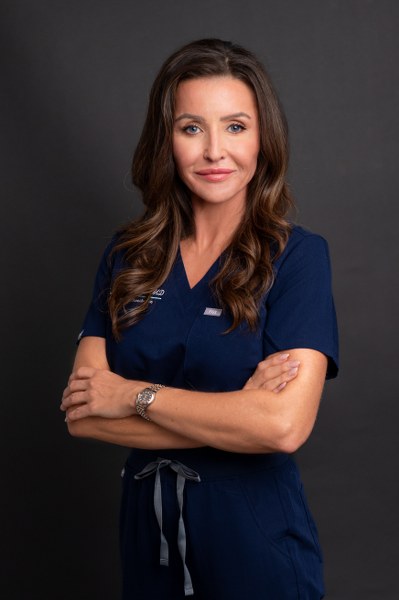
-Dr. Harrington
THE HELP OF TECHNOLOGY
With new procedures comes the opportunity for technological advancement in the operating room and innovative solutions to further aid patient outcomes.
Mastectomies are “traumatic” to the breast skin, Dr. Harrington said, and a major challenge as a reconstructive surgeon is deciding whether a patient’s skin is healthy enough to proceed directly to an implant.
“Previously, we really just used our clinical assessment of the tissue – our eyes,” Dr. Harrington said. “It’s just not really good enough.”
Enter SPY-PHI technology, a game changer during direct-to-implant procedures.
The SPY Portable Handheld Imager (SPY-PHI) uses SPY Fluorescence Imaging technology to let surgeons see blood flow during a procedure like breast reconstruction.
How does it work?
Dr. Harrington injects a safe fluorescent dye into a patient’s IV and then uses the handheld imaging tool to view the dye in the bloodstream.
“The patient starts glowing,” Dr. Harrington said, smiling. “I call it ‘Captain Marvel.’”
Using the tool to see the dye in a patient’s bloodstream helps Dr. Harrington assess the blood flow, which in turn allows her to make a more confident decision about the health of the skin and proceeding directly to an implant.
“I’m able to do one stage, direct-to-implant reconstruction with the confidence knowing that the blood supply looked good and what we’re doing is safe, and then put the implant above the muscle too,” she said. “We’re really achieving a lot of things here.”
HEALING BETTER
The addition of Dr. Harrington to the Beaufort Memorial team is a major stride in the expansion of specialized care in Beaufort County, offering patients innovative, high-quality care right here at home.
“She’s been fantastic,” said Dr. Grahovac. “I’m excited she’s here. It leads to the best outcomes for patients when you’re a team. We’re constantly in communication, strategizing approaches together. When you have a multidisciplinary surgical team, that’s always going to translate into the best outcomes for patients, both oncologically and cosmetically.”
Being diagnosed with breast cancer is life-changing, and when a patient isn’t able to seek care in their own community, among their own friends, family, and support system, it can be a burden on them.
“This has been the perfect place to come to as far as the need for what I do,” Dr. Harrington reflected. “You just do better and heal better in your community, surrounded by people who know you, understand you, and support you. I’m excited to be able to bring what I do here because it feels like it was needed.”

